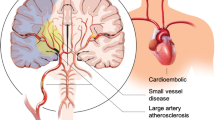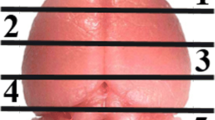Abstract
Abstract
Detection of DNA synthesis in brain employing (3H)thymidine ((3H)dT) or bromo deoxyuridine (BrdU) is widely used as a measure of the “birth” of cells in brain development, adult neurogenesis and neuronal stem cell replacement strategies. However, recent studies have raised serious questions about whether this methodology adequately measures the “birth” of cells in brain either quantitatively or in an interpretable way in comparative studies, or in stem cell investigations. To place these questions in perspective, we review deoxynucleoside synthesis and pharmacokinetics focusing on the barriers interfacing the blood-brain (cerebral capillaries) and blood-cerebrospinal fluid (choroid plexus), and the mechanisms, molecular biology and location of the deoxynucleoside transport systems in the central nervous system. Brain interstitial fluid and CSF nucleoside homeostasis depend upon the activity of concentrative nucleoside transporters (CNT) on the ‘central side’ of the barrier cells and equilibrative nucleoside transporters (ENT) on their ‘plasma side.’ With this information about nucleoside transporters, blood/CSF concentrations and metabolic pathways, we discuss the assumptions and weaknesses of using (3H)dT or BrdU methodologies alone for studying DNA synthesis in brain in the context of neurogenesis and potential stem cell therapy. We conclude that the use of (3H)dT and/or BrdU methodologies can be useful if their limitations are recognized and they are used in conjunction with independent methods.

Similar content being viewed by others
References
G. Kempermann. Adult Neurogenesis. Oxford, New York, 2006.
H. A. Cameron and R. D. G. McKay. Adult neurogenesis produces a large pool of new granule cells in the dentate gyrus. J. Comp. Neurol. 435:406–417 (2001).
T. C. Burns, X. R. Ortiz-González, M. Gutiérrez-Pérez, et al. Thymidine analogs are transferred from prelabeled donor to host cells in the central nervous system after transplantation: a word of caution. Stem Cells 24:1121–1127 (2006).
K. I. Park, M. A. Hack, J. Ourednik, et al. Acute injury directs the migration, proliferation, and differentiation of solid organ stem cells: evidence from the effect of hypoxia-ischemia in the CNS on clonal “reporter” neural stem cells. Exp. Neurol. 199:156–178 (2006).
P. Rakic. A century of progress in corticoneurogenesis: from silver impregnation to genetic engineering. Cereb. Cortex 16:i3–i17 (2006).
K. Sato, J. Kanno, T. Tominaga, Y. Matsubara, and S. Kure. De novo and salvage pathways of DNA synthesis in primary cultured neural stem cells. Brain Res. 1071:24–33 (2006).
J. Eells and R. Spector. Determination of ribonucleosides, deoxyribonucleosides and purine and pyrimidine bases in adult rabbit cerebrospinal fluid and plasma. Neurochem. Res. 8:1307–1320 (1983).
J. Eells and R. Spector. Purine and pyrimidine base and nucleoside concentrations in human cerebrospinal fluid and plasma. Neurochem. Res. 8:1451–1457 (1983).
A. Kornberg and T. A. Baker. DNA Replication, 2nd ed. Freeman, New York, 1992.
J. T. Eells and R. Spector. Identification, development and regional distribution of ribonucleotide reductase in adult rat brain. J. Neurochem. 40:1008–1012 (1983).
S. A. Suleiman and R. Spector. Identification, development and regional distribution of thymidylate synthetase in adult rabbit brain. J. Neurochem. 38:392–396 (1982).
L. Wang, A. Saada, and S. Eriksson. Kinetic properties of mutant human thymidine kinase 2 suggest a mechanism for mitochondrial DNA depletion myopathy. J. Biol. Chem. 278:6963–6968 (2003).
V. Dolce, G. Fiermonte, M. J. Runswick, F. Palmieri, and J. E. Walker. The human mitochondrial deoxynucleotide carrier and its role in the toxicity of nucleoside antivirals. Proc. Natl. Acad. Sci. 98:2284–2288 (2001).
G. Pontarin, P. Ferraro, M. L. Valentino, et al. Mitochondrial DNA depletion and thymidine phosphate pool dynamics in a cellular model of mitochondrial neurogastrointestinal encephalomyopathy. J. Biol. Chem. 281:22720–22728 (2006).
A. Spinazzola, R. Marti, I. Nishino, et al. Altered thymidine metabolism due to defects of thymidine phosphorylase. J. Biol. Chem. 277:4128–4133 (2002).
D. J. Begley and M. W. Brightman. Structural and functional aspects of the blood-brain barrier. Prog. Drug Res. 61:39–78 (2003).
C. E. Johanson, J. A. Duncan, E. G. Stopa, and A. Baird. Enhanced prospects for drug delivery and brain targeting by the choroid plexus-CSF route. Pharm. Res. 22:1011–1037 (2005).
C. E. Johanson and D. M. Woodbury. Uptake of [14C]urea by the in vivo choroid plexus-cerebrospinal fluid-brain system: identification of sites of molecular sieving. J. Physiol. 275:167–176 (1978).
D. E. Smith, C. E. Johanson, and R. F. Keep. Peptide and peptide analog transport systems at the blood-CSF barrier. Adv. Drug Deliv. Rev. 56:1765–1791 (2004).
R. Spector and C. E. Johanson. The mammalian choroid plexus. Sci. Am. 261:68–74 (1989).
R. Spector and C. Johanson. Micronutrient and urate transport in choroid plexus and kidney: implications for drug therapy. Pharm. Res. 23:2515–2524 (2006).
Z. B. Redzic. Homeostasis of nucleosides and nucleobases in the brain: the role of flux between the CSF and the brain ISF, transport across the choroid plexus and the blood-brain barrier, and cellular uptake. In W. Zheng and A. Chodobski (eds)., The Blood-Cerebrospinal Fluid Barrier, CRC, Boca Raton, 2005, pp. 175–208.
E. M. Cornford and W. H. Oldendorf. Independent blood-brain barrier transport systems for nucleic acid precursors. Biochim. Biophys. Acta 394:211–219 (1975).
R. Spector. Thymidine transport in the central nervous system. J. Neurochem. 35:1092–1098 (1980).
R. Spector and W. G. Berlinger. Localization and mechanism of thymidine transport in the central nervous system. J. Neurochem. 39:837–841 (1982).
R. Spector. Development and localization of the thymidine phosphorylating systems in the brain. J. Neurochem. 36:2019–2024 (1981).
R. Spector. Thymidine accumulation by choroid plexus in vitro. Arch. Biochem. Biophys. 205:85–93 (1980).
R. Spector. Nucleoside transport in choroid plexus: mechanism and specificity. Arch. Biochem. Biophys. 216:693–703 (1982).
R. Spector and S. Huntoon. Specificity and sodium-dependence of the active nucleoside transport system in choroid plexus. J. Neurochem. 42:1048–1052 (1984).
R. Spector and S. Huntoon. Deoxycytidine transport metabolism in the central nervous system. Neurochemistry 40:1474–1480 (1983).
R. Spector and S. Huntoon. Characterization, development, and localization of the deoxycytidine phosphorylating systems in mammalian brain. J. Neurochem. 40:1481–1486 (1983).
R. Spector and S. Huntoon. Deoxycytidine transport and metabolism in the central nervous system. J. Neurochem. 41:1131–1136 (1983).
S. A. Suleiman and R. Spector. Metabolism of deoxyuridine in rabbit brain. J. Neurochem. 39:824–830 (1982).
J. H. Gray, R. P. Owen, and K. M. Giacomini. The concentrative nucleoside transporter family, SLC28. Eur. J. Physiol. 447:728–734 (2004).
S. A. Baldwin, P. R. Beal, S. Y. M. Yao, et al. The equilibrative nucleoside transport family SLC29. Eur. J. Physiol. 447:735–743 (2004).
M. W. L. Ritzel, A. M. L. Ng, S. Y. M. Yao, et al. Molecular identification and characterization of novel human and mouse concentrative Na+-nucleoside cotransporter proteins (hCNT3 and mCNT3) broadly selective for purine and pyrimidine nucleosides (system cib). J. Biol. Chem. 276:2914–2927 (2001).
D. Wu, J. G. Clement, and W. M. Pardridge. Low blood-brain barrier permeability to azidothymidine (AZT), 3TC™, and thymidine in the rat. Brain Res. 791:313–316 (1998).
S. A. Thomas and M. B. Segal. Saturation kinetics, specificity and NBMPR sensitivity of thymidine entry into the central nervous system. Brain Res. 760:59–67 (1997).
J. Y. Li, R. J. Boado, and W. M. Pardridge. Cloned blood-brain barrier adenosine transporter is identical to the rat concentrative Na+ nucleoside cotransporter CNT2. J. Cereb. Blood Flow Metab. 21:929–936 (2001).
A. J. Isakovic, M. B. Segal, B. A. Milojkovic, et al. The efflux of purine nucleobases and nucleosides from the rat brain. Neurosci. Lett. 318:65–68 (2002).
Z. B. Redzic, J. Biringer, K. Barnes, et al. Polarized distribution of nucleoside transporters in rat brain endothelial and choroid plexus epithelial cells. J. Neurochem. 94:1420–1426 (2005).
L. Alanko, T. Porkka-Heiskanen, and S. Soinila. Localization of equilibrative nucleoside transporters in the rat brain. J. Chem. Neuroanat. 31:162–168 (2006).
M. E. Schaner, K. M. Gerstin, J. Wang, and K. M. Giacomini. Mechanisms of transport of nucleosides and nucleoside analogues in choroid plexus. Adv. Drug Deliv. Rev. 39:51–62 (1999).
B. Tavazzi, G. Lazzarino, P. Leone, et al. Simultaneous high performance liquid chromatographic separation of purines, pyrimidines, N-acetylated amino acids, and dicarboxylic acids for the chemical diagnosis of inborn errors of metabolism. Clin. Biochem. 38:997–1008 (2005).
J. Eells, R. Spector, and S. Huntoon. Nucleoside and oxypurine homeostasis in adult rabbit cerebrospinal fluid and plasma. J. Neurochem. 42:1620–1624 (1984).
R. Stene and R. Spector. Effect of a 400-kilocalorie carbohydrate diet on human plasma uridine and hypoxanthine concentrations. Biochem. Med. Metabol. Biol. 38:44–46 (1987).
G. Kempermann, H. G. Kuhn, and F. H. Gage. Genetic influence on neurogenesis in the dentate gyrus of adult mice. Proc. Natl. Acad. Sci. USA 94:10409–10414 (1997).
B. Leuner, E. Gould, and T. J. Shors. Is there a link between adult neurogenesis and learning? Hippocampus 16:216–224 (2006).
A. Harman, P. Meyer, and A. Ahmat. Neurogenesis in the hippocampus of an adult marsupial. Brain Behav. Evol. 62:1–12 (2003).
N. Kee, S. Sivalingam, R. Boonstra, and J. M. Wojtowics. The utility of Ki-67 and BrdU as proliferative markers of adult neurogenesis. J. Neurosci. Methods 115:97–105 (2002).
H. Zhu, Z. Wang, and H. Hansson. Visualization of proliferating cells in the adult mammalian brain with the aid of ribonucleotide reductase. Brain Res. 977:180–189 (2003).
J. R. Selden, F. Dolbeare, J. H. Clair, et al. Statistical confirmation that immunofluorescent detection of DNA repair in human fibroblasts by measurement of bromodeoxyuridine incorporation is stoichiometric and sensitive. Cytometry 14:154–167 (1993).
T. D. Palmer, A. R. Willhoite, and F. H. Gage. Vascular niche for adult hippocampal neurogenesis. J. Comp. Neurol. 425:479–494 (2000).
Acknowledgements
The authors thank Michiko Spector for her aid in the preparation of the manuscript and Julie Johanson for assistance with graphics.
Author information
Authors and Affiliations
Corresponding author
Rights and permissions
About this article
Cite this article
Spector, R., Johanson, C.E. The Origin of Deoxynucleosides in Brain: Implications for the Study of Neurogenesis and Stem Cell Therapy. Pharm Res 24, 859–867 (2007). https://doi.org/10.1007/s11095-006-9221-0
Received:
Accepted:
Published:
Issue Date:
DOI: https://doi.org/10.1007/s11095-006-9221-0




